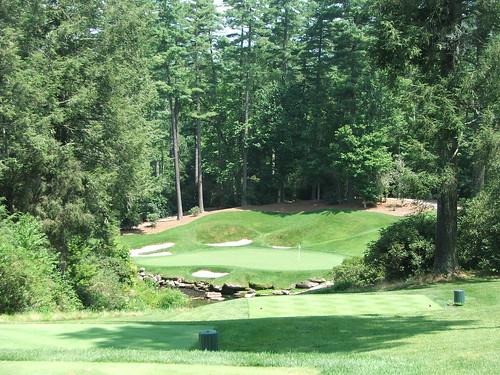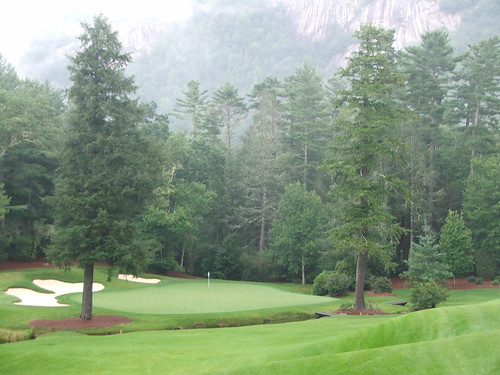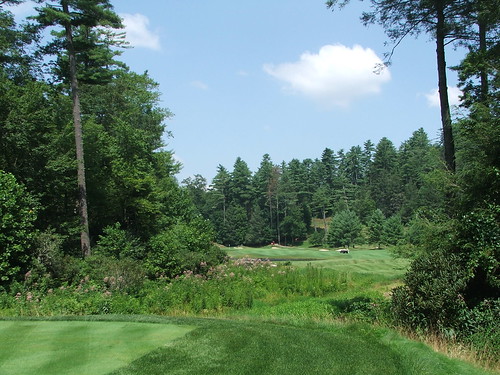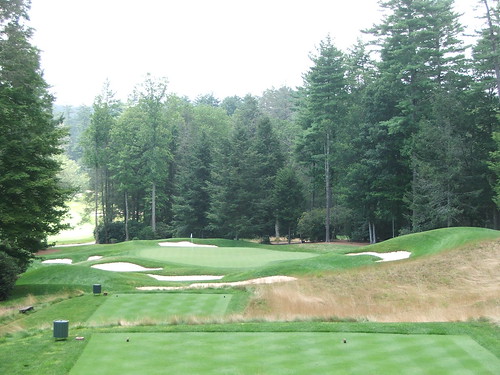 CARDIFF, WALES - SEPTEMBER 29: The wives and partners of the United States Ryder Cup team L-R: Melissa Lehman (Tom Lehman), Amy Mickelson (Phil Mickelson), Tabitha Furyk (Jim Furyk), Robin Love (Davis Love III), Kandi Mahan (Hunter Mahan), Sybil Kuchar (Matt Kuchar), Christina Zimmer (Jeff Overton), Lisa Cink (Stewart Cink), Lisa Pavin (Corey Pavin), Kim Johnson (Zach Johnson), Alexandra Browne (Rickie Fowler), Angie Watson (Bubba Watson), Amanda Caulder (Dustin Johnson), Michelle Mell (Paul Goydos) pose for a photograph during the 2010 Ryder Cup Dinner at Cardiff Castle on September 29, 2010 in Cardiff, Wales. (Photo by Andrew Redington/Getty Images)
CARDIFF, WALES - SEPTEMBER 29: The wives and partners of the United States Ryder Cup team L-R: Melissa Lehman (Tom Lehman), Amy Mickelson (Phil Mickelson), Tabitha Furyk (Jim Furyk), Robin Love (Davis Love III), Kandi Mahan (Hunter Mahan), Sybil Kuchar (Matt Kuchar), Christina Zimmer (Jeff Overton), Lisa Cink (Stewart Cink), Lisa Pavin (Corey Pavin), Kim Johnson (Zach Johnson), Alexandra Browne (Rickie Fowler), Angie Watson (Bubba Watson), Amanda Caulder (Dustin Johnson), Michelle Mell (Paul Goydos) pose for a photograph during the 2010 Ryder Cup Dinner at Cardiff Castle on September 29, 2010 in Cardiff, Wales. (Photo by Andrew Redington/Getty Images)
American Team WAGS
 CARDIFF, WALES - SEPTEMBER 29: The wives and partners of the United States Ryder Cup team L-R: Melissa Lehman (Tom Lehman), Amy Mickelson (Phil Mickelson), Tabitha Furyk (Jim Furyk), Robin Love (Davis Love III), Kandi Mahan (Hunter Mahan), Sybil Kuchar (Matt Kuchar), Christina Zimmer (Jeff Overton), Lisa Cink (Stewart Cink), Lisa Pavin (Corey Pavin), Kim Johnson (Zach Johnson), Alexandra Browne (Rickie Fowler), Angie Watson (Bubba Watson), Amanda Caulder (Dustin Johnson), Michelle Mell (Paul Goydos) pose for a photograph during the 2010 Ryder Cup Dinner at Cardiff Castle on September 29, 2010 in Cardiff, Wales. (Photo by Andrew Redington/Getty Images)
CARDIFF, WALES - SEPTEMBER 29: The wives and partners of the United States Ryder Cup team L-R: Melissa Lehman (Tom Lehman), Amy Mickelson (Phil Mickelson), Tabitha Furyk (Jim Furyk), Robin Love (Davis Love III), Kandi Mahan (Hunter Mahan), Sybil Kuchar (Matt Kuchar), Christina Zimmer (Jeff Overton), Lisa Cink (Stewart Cink), Lisa Pavin (Corey Pavin), Kim Johnson (Zach Johnson), Alexandra Browne (Rickie Fowler), Angie Watson (Bubba Watson), Amanda Caulder (Dustin Johnson), Michelle Mell (Paul Goydos) pose for a photograph during the 2010 Ryder Cup Dinner at Cardiff Castle on September 29, 2010 in Cardiff, Wales. (Photo by Andrew Redington/Getty Images)
Foley on Woods
Sean Foley spoke with the NY Times on how many majors his new student would win.
"It's not a function of if he will break Jack's records, it's a matter of when," Foley told the Times. "Tiger is only 34. He's got basically 12 more years, and that's 48 more majors to win four [to tie Nicklaus]. I don't know how many majors he will win, but it's definitely more than 18.
"I'll go with 22 or 23."
I agree. Perfect logic.
Ryder Cup: Friday Morning Matches
Prediction: Half
Prediction: Half
Match 3: Steve Stricker-Tiger Woods vs. Ian Poulter-Ross Fisher.
Prediction: USA
Match 4: Bubba Watson-Jeff Overton vs. Luke Donald-Padraig Harrington.
Prediction: Europe
Draw for October Monthly Medal - Saturday 2 October
0800 I Butchart, K James, F McColl
0807 M Grieve, R Michie, I McGowan
0815 P Johnstone, I Clarke, A Ramsay
0822 M Melville, K Macleod, R Donaldson
0830 J Ireland, F Barber, D Easson
0837 D McDonald, T Bennet, P Crockart
Lunchtime starters
1200 N Dyce, S Thomson, R Tinker
1207 C McKenna, C Flannigan, J Scott
1215 M Tinker, I Scott, A Aird
1222 R Dyce, G McLuskey, B Sievewright
1230 D Grant, W McGregor, K Ewan
1237 A Downs, F Moran, C Carmichael
1245 D Robinson, C McDonald, M Shepherd
1252 C Thoms, D Norman, J Henvey
1300 E Gray, K McVey, J Henvey (jnr)
Photo of US Ryder Cup team's wives and girlfriends
WGC-HSBC Champions – Caddies share how to finish strong at Sheshan
 |
| Ernie Els teeing off on the 18th hole at Sheshan International Golf Club |
Follow Golf4Beginners on Twitter
Read more Golf for Beginners blog
WGC-HSBC Champions – Caddies share how to finish strong at Sheshan (18 hole version)
for Sheshan's 14-18 exciting finishing holes only, click here
HOLE | YDS | MTS | PAR | HOLE | YDS | MTS | PAR | |
1 | 459 | 420 | 4 | 10 | 401 | 367 | 4 | |
2 | 550 | 503 | 5 | 11 | 456 | 417 | 4 | |
3 | 362 | 331 | 4 | 12 | 217 | 198 | 3 | |
4 | 200 | 183 | 3 | 13 | 411 | 376 | 4 | |
5 | 456 | 417 | 4 | 14 | 594 | 543 | 5 | |
6 | 200 | 183 | 3 | 15 | 487 | 445 | 4 | |
7 | 346 | 316 | 4 | 16 | 288 | 263 | 4 | |
8 | 603 | 551 | 5 | 17 | 212 | 194 | 3 | |
9 | 486 | 444 | 4 | 18 | 538 | 492 | 5 | |
OUT | 3662 | 3348 | 36 | IN | 3604 | 3295 | 36 | |
TOTAL | 7266 |
Follow Golf4Beginners on Twitter
Read more Golf for Beginners blog
Posted via email from stacysolomon's posterous
Friday Fourball pairings announced
The pairings for the Celtic Manor tournament have been released. "Lefty" and Johnson play Lee Westwood and PGA champion Martin Kaymer, representing Europe.
For the first time since 1999, Tiger Woods is not in the leadoff match, but is paired with Steve Stricker, with opposition from Ian Poulter and Ross Fisher.
The other two match-ups sees Stewart Cink and Matt Kuchar playing Rory McIlroy and Graeme McDowell - and Bubba Watson and Jeff Overton face Luke Donald and Padraig Harrington.
Ryder Cup Fourballs - The First Pairings
| Tee-Off | Europe | USA |
| 7.45am | Westwood & Kaymer | Mickelson & D Johnson |
| 8.00am | McIlroy & McDowell | Cink & Kuchar |
| 8.15am | Poulter & Fisher | Stricker & Woods |
| 8.30am | Donald & Harrington | Watson & Overton |
Wade Hampton Golf Club

 Wade Hampton sporting a serious handlebar mustache
Wade Hampton sporting a serious handlebar mustacheThe course was designed by Tom Fazio, and he remains an active member today. The club was opened in 1987 with 120 charter and founding members, all from below the Mason-Dixon Line: seven from Augusta, Georgia and the remainder from Florida, Alabama and North Carolina. Although the membership has changed somewhat since the club's founding, Wade Hampton remains a below-the-radar Southern club. Similar to Fishers Island, in order to be a member of the club, you have to own property or a house bordering the course, making it a small, tight knit group, which explains why it took so many years for this cantankerous Yankee to get invited to play.
At the guard-gated entrance we were greeted with a big "Good maw-nin." Once through the gate you make a "ryat" followed by a "layft" to get to the clubhouse.
The course has a program where they sponsor young adults from South Africa to apprentice as caddies and in other jobs to learn the golf business. These well-mannered youngsters add some nice character to Wade Hampton. The course also has the nicest staff of any course I have visited. As at the Honors Course and Muirfield Village, your car is valet parked. EVERY employee greeted us warmly and welcomed us to the club. This was consistent all day long; they have really developed a culture of service excellence here that is unmatched.

The dramatic, downhill par 5 opening hole at Wade Hampton

The downhill par three sixth hole
The 172 yard par three eleventh is another downhill beauty that uses the trees and bunkers to perfectly frame this verdant hole.
At least twelve holes at Wade Hampton play from an elevated tee box and the thirteenth is the most dramatic of them all. The 406 yard hole plays from an elevated tee and the second shot is also down a hill to the green.

The dramatic par four 13th hole with the mountain backdrop
What makes the thirteenth hole so dramatic is how close the granite face of Chimney Top Mountain is to you. It is not in the distance, but quite close to you as you play the hole and about 1,000 feet high. It's hard to focus on playing the hole, the grandeur of the mountain is so distracting. This was one of my favorite holes, along with the eighteenth.

The par three 17th hole, framed by two giant hemlock trees
The tantalizing seventeenth is also a very dramatic par three. It plays 190 yards downhill, with a small stream running in front of the green. The green is framed by two giant hemlock trees and the mountain. Wade Hampton is one of only a handful of mountain courses ranked in the top 100, the others being Highlands Links in Canada, Homestead (Cascades) in Virginia and Naruo in Japan.

The 18th green with the lovely clubhouse in the background
The eighteenth is a really good short par five finishing hole that gets progressively narrower from tee to green. Down its entire left hand side there is a stream and the fairway slopes right to left. It is equally as magnificent viewed from either the tee or the green. The intoxicating clubhouse provides a welcome distraction as you approach the green. It has a series of cascading porches, verandas and patios and exudes understated Southern elegance. The boys put some serious money into this hideaway.

The 18th fairway looking backward from the green
There are probably only a handful of courses better to play on than Wade Hampton on a sunny summer day; certainly almost none away from the sea. Playing at Wade Hampton is like being inside a Thomas Kinkade painting: Idyllic, with bucolic scenery and an idealized version of the world.
With the exception of the par four thirteenth, I liked the par threes and fives on the course better than the par fours. The par threes all make great use of the downhill terrain and are perched in special locations, tucked into corners around the property. The four par five holes were all very well designed and rewarded bold shots, but also gave a safe play for the higher handicapper. The course is quite difficult, with slope ratings on the various men's tee boxes ranging from 136-146.
During my visit I stayed at the High Hampton Inn, which is less than a mile from Wade Hampton down Highway 107. It is an old-style traditional inn where you still have to wear a jacket and tie at dinner; it has no air conditioning, no TV's; and still has its original 1930s knotty pin wood interiors. We sweated profusely at dinner but still enjoyed the show put on by the old-time Southerners who frequent this region in their seersucker suits and summer linen outfits, strutting their stuff up in the mountains. Our food at the buffet dinner was awful and the lack of air conditioning led me to develop a serious case of prickly heat. Plus, the place was also over-run with toddlers and kids. On the positive side the breakfast was quite good and the place has serious ambiance. One night staying there was enough, since I'm too uncouth to appreciate it and I miss my MTV.
My regular readers know I'm a big fan of the South and enjoyed playing Yeamans Hall, The Honors Course, Kiawah and Harbour Town. Wade Hampton is no exception. Wade Hampton is hard to get to, and frankly, like a lot of out-of-the-way places I have played like Sand Hills and Barnbougle Dunes, that is part of the charm. I drove the three hours from Atlanta to Cashiers, the last 45 minutes of which you ride on the single lane South Carolina State Highway 107. It is a long and winding road which snakes steeply uphill with 'S' turn after 'S' turn in the back woods, with the occasional old broken-down general store or barbeque shack. I continue to love the countryside, traditions and feel of the Old South, although I wouldn't want my car to break down on any of these back roads. It's not hard to see why Deliverance was filmed near here.
Only one more course in the South to play. I'm livin' the dream out here!
Ryder Cup First Round - Fourball Explained
Golf Channel Big Break Dominican Republic relying on Giuliani for support
 |
| Andrew Giuliani (credit) |
Twelve former contestants will get a second chance tonight at The Big Break: Reunion, Revenge, Redemption, this time set in the Dominican Republic. The premise is that teams compete against each other in order for one golfer, male or female, to reign supreme, get exemptions and win prize money.
Sure the prizes and the idea of Big Break are interesting but can't Golf Channel come up with a slew of new contestants or are fans more interested in watching a show that rivals Jersey Shore?
Here are the cast of characters for Big Break Dominican Republic season 14:
Follow Golf4Beginners on Twitter
Read more Golf for Beginners blog
















